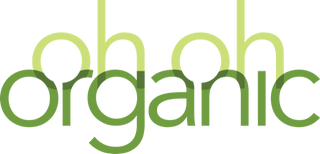THE CERTIFICATION PROCESS
Let’s talk about how cosmetic products get certified under the NOP. Maybe it will help people see how this food model interacts (or does not) with cosmetics.
Start with the qualifications – the NOP allowed everyone who wanted to, to become a certifier initially (2001) – whether they had the experts on hand or not. As years have gone on, the NOP has tightened up and are requiring more and more of the certifiers to demonstrate greater management expertise and product/service expertise. They have still not looked at the education as it relates to fine points but they do require that you show that the people making decisions have some education, training, and/or experience in the area that they are certifying, i.e., livestock decisions need to made by people that have qualifications for working with livestock management. The NOP is actually rescinding the right to certify in certain areas of the “Scope” (Farm, Livestock, Processing) if the certifier cannot demonstrate the necessary expertise to assess and make an informed decision about the products at hand.
Then what happens?
An applicant fills in forms (that were designed to evaluate food production) and submits these along with a recipe or formula or …whatever you want to call it. In their “Organic System Plan” they explain how they manage the procurement identification, physical handling, and batching of the organic and allowed non-organic inputs to the finished product. They also have to provide documents that “prove” that the non-organic ingredients comply with the requirements of the regulation (non-gmo, not irradiated, not solvent extracted, etc.). The certifier is obligated to “confirm the ability to comply” and then they can set up an inspection. Then you (applicant) should be able to “prove” through documentation that anything you say you do, you have, indeed, done. For example, if you say that you wash down the line and remove the residue of the sanitizer, you should be able to prove that, 1) the sanitizer can be removed (which is not the case for quaternary ammonia products) and that, 2) you have logged the practice of implementing your sanitizing procedure. If you say an ingredient is “organic”, you need to have a current certificate AND an invoice to prove you purchased ingredient. Oh – the certificate needs to match the invoice. You can’t buy it from someone that is not qualified to sell it – unless the package is intact and the vendor is a broker of a trader. An example of this is that I sell some oils in their original drums and can provide the cert from the original packer and their label is on my certificate – either way it proves my handling of those products is compliant. This is what the certification world refers to as “audit trail”.
So then – it comes to the “on site” inspection. The certifier sends an inspector to verify that what ever you say you do, is being done and that you are not doing things that you have not represented in the “Organic System Plan” or OSP (think of the OSP as GMPs for organic.)
Here are a few of my concerns: in an environment where a company is synthesizing ingredients like soaps or glycerin or esters, the certifiers usually have no experience at all in synthesis chemistry. Now this is fine if the applicant knows all the rules and does it all according to the rules, but if the chemist is thinking one thing and the inspector is thinking another and there is a lack of understanding…than things can get certified that, perhaps, should not be. This can happen, for example, because certifiers ask for “processing aids” and never mention reagents or catalysts (again, not used in food production) or simply because what is so simple or normal to a chemist and may not be allowed under the NOP but “food” language if different than “synthesis chemistry” language and things can get cloudy. Another area of concern is the making of finished products. If a company runs hair care products through their equipment and does not have dedicated organic equipment or a way to truly remove the residue from quats and silicons, they are making “organic” product that is contaminated due to contact with these 2 categories of materials. Since most certifiers are unaware that these materials are used as ingredients (in the food world they would only look for quats in sanitizers and they don’t use silicons at all in food) so…they may not ask about these materials at all, they would be invisible and would remain as contaminants under an NOP system.
Further more – since many of the certifiers do not have chemists on staff, they are making, what I call, “Google Decisions” about some of the processes that they certify – they have no first hand experience or knowledge of the process but they’ve looked it up on Google and seem to glean enough info to make them comfortable about certifying it.
I won’t even get into the issue of certifying cosmetics to a food standard that requires food labeling laws but are being labeled under INCI.
Summed up: when decisions are made by a certifier who is not FULLY informed, there exists a chance that the certificate could be pulled at some date, or that labels are wrong, or lord knows what else. That is the time to remember that the applicant is responsible for the law. You need to understand it better than your certifier because they will have plenty of customers and no one really knows who they are. Brands, on the other hand, have a reputation to protect. Look at Johnson & Johnson.







